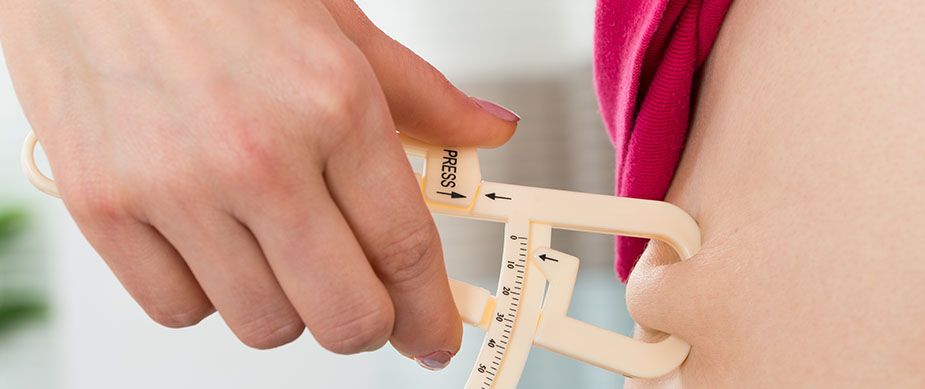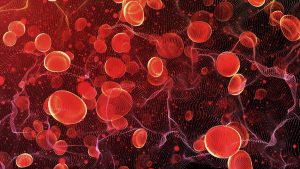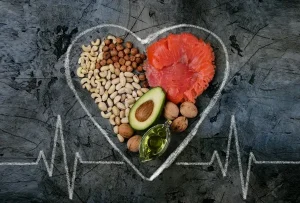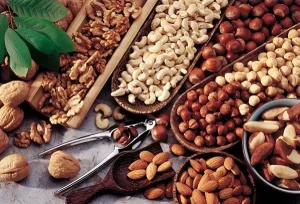Diet plays an important role in the production of triglycerides in the body. Diet and lifestyle changes can help reduce elevated triglyceride levels. In turn, this can improve your metabolic health. Here are some of the top Foods To Lower Triglycerides levels.
Contents
What are the Triglycerides?
In the body, triglycerides are a form of lipid or fat. Triglycerides are the most prevalent form of fat since they are the type that the body stores the majority of. Triglyceride levels can be determined by a doctor through a blood test.
In the blood, triglycerides are carried by lipoproteins, which are rounded particles. Triglycerides can be consumed by people directly through meals that are high in fat, such as butter, and oil. Additionally, extra energy is converted to and stored as triglycerides when people eat more calories than they require from other meals, such as carbs.
One of the body’s primary energy sources is triglycerides. However, having high blood triglyceride levels may make someone more vulnerable to:
- Insulin sensitivity
- obesity
- Cardiovascular disease and type 2 diabetes pancreatitis
There are two usual values of fasting blood triglycerides, according to the National Heart, Lung, and Blood Institute. For young children (under 10 years old), the first is less than 75 mg/dl. For adults and children older than 10, the second is less than 90 mg/dl.
If a patient’s fasting blood triglyceride levels are regularly 150 mg/dl or greater, a diagnosis of high triglycerides (also known as hypertriglyceridemia) may be made. Triglyceride levels may be genetically predisposed in some individuals. This condition is referred to as familial hypertriglyceridemia. Males typically have blood triglycerides that are higher than females, and these levels tend to rise with age.
Top 10 Healthy Foods To Lower Triglycerides:
1. Whole grains
Oatmeal, buckwheat, barley, and millet are examples of whole grains that have been acknowledged for their ability to lower the risk of heart disease. Oatmeal is beneficial in lowering total cholesterol and blood sugar levels, according to research from PubMed. It has not, however, been demonstrated to particularly lower triglyceride levels. Meanwhile, studies have shown that buckwheat, barley, and millet can lower triglyceride levels by as much as 74%. To help reduce triglyceride levels, you should consistently include whole grains in your diet.
2. Fatty Fish
Salmon, mackerel, herring, and other fatty fish are significant sources of omega-3 lipids that decrease triglycerides. Healthy fats include omega-3 fatty acids. In addition to being necessary for healthy cell membranes, they promote gut and brain health, decrease cholesterol, and aid to reduce inflammation.
It has been demonstrated that regularly ingesting these fatty fish instead of lean fish like cod or lean beef dramatically lowers triglyceride levels. Eating 1.65 pounds (750 grams) of fatty fish every week for four weeks, which is the equivalent of 4 ounces (114 grams) of fish per day, reduced triglycerides and many risk factors for type 2 diabetes and heart disease in a trial of 38 women conducted in 2016.
You may get omega-3 fats through krill oil and fish oil supplements in addition to fatty Foods To Lower Triglycerides. In fact, it has been demonstrated that they are equally effective in reducing triglyceride and cholesterol levels.
3. Fiber in Vegetables
Fiber has many advantages. It fills you up without adding a lot of calories and slows down digestion, keeping you fuller for longer and also helping to reduce triglycerides. Fiber is commonly found in fruits, vegetables, and lentils, as well as some grains. A few fiber-rich Foods To Lower Triglycerides:
- Beans, pumpkin seeds.
- Oats, oatmeal porridge.
- Peas, Brussels sprouts.
- Broccoli, raspberries.
- Whole wheat pasta.
Depending on the grains you eat, you may be providing your body with more fiber — or more triglycerides. Avoid refined white flour by switching to whole grains. Here are some ideas for swapping out Foods To Lower Triglycerides high in triglycerides for healthier fiber options:
- For breakfast, have a bowl of chopped oatmeal with berries (especially raspberries and blueberries) instead of bread or sugary cereal.
- For lunch, try a salad with lots of vegetables and beans.
- For dinner, try brown rice instead of potatoes or pasta.
4. Nuts
Nuts are a great source of fiber, omega-3 fatty acids, and unsaturated fats, all of which help reduce triglyceride levels. An analysis of 61 studies found that each serving of nuts was associated with a 2.2 mg/dL (0.02 mmol/L) reduction in triglycerides. An analysis of 2,226 participants had similar findings, showing that eating nuts were associated with lower blood triglycerides. Nuts include:
- Almond
- Pecan
- Walnuts
- Cashew
- Pistachio
- Brazil nuts
- Macadamia nuts
Remember that nuts are high in calories. One serving of almonds, or about 23 nuts, contains 163 calories, so you should eat them in moderation. Most studies have found the most dramatic health benefits in people who consume 3-7 servings of nuts per week.In summary, nuts are packed with heart-healthy nutrients including fiber, omega-3 fatty acids, and unsaturated fats. Studies show that eating about 3-7 servings of nuts per week can reduce triglyceride levels.
5. Eat more unsaturated fats
Studies show that monounsaturated and polyunsaturated fats can lower blood triglycerides, especially when they are used in place of other fats. Monounsaturated fats are found in Foods To Lower Triglycerideslike like olive oil, nuts, and avocados. Polyunsaturated fats are found in vegetable oils and fatty fish. One study analyzed the Foods To Lower Triglycerides 452 adults ate in 24 hours and focused on several types of saturated and polyunsaturated fats. The researchers found that eating saturated fat can lead to an increase in blood triglycerides, while polyunsaturated fat causes it to decrease.
Another study had elderly people take 4 tablespoons of extra virgin olive oil daily for six weeks. During the study period, this was the only source of additional fat in their diets. The results showed a significant reduction in triglyceride levels, as well as total cholesterol and LDL cholesterol, compared with the control group. To maximize the benefits of unsaturated fats in reducing triglycerides, choose a healthy fat like olive oil and use it in place of other fats like trans fats or oils. processed plants in the diet.
In summary, monounsaturated and polyunsaturated fats can lower blood triglyceride levels, especially when they are consumed in place of other fats.
Conclusion:
Foods To Lower Triglycerides and lifestyle have a big effect on your triglyceride levels. Substituting healthy, unsaturated fats for trans fats, eating low-carb diets, and exercising regularly can reduce triglyceride levels in the short term. With a few simple lifestyle changes, you can reduce your triglycerides and improve your overall health at the same time.






